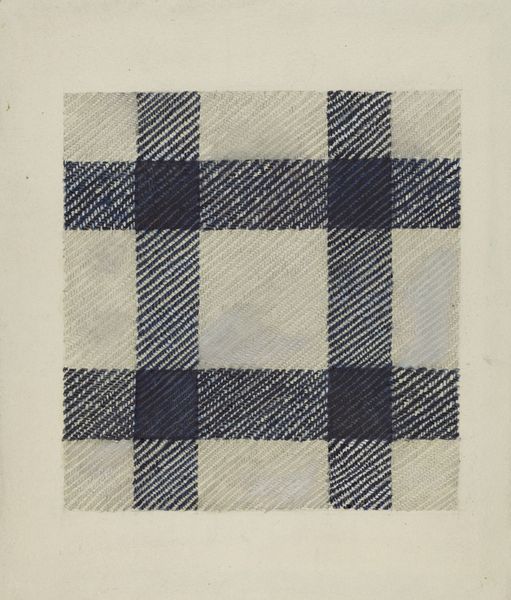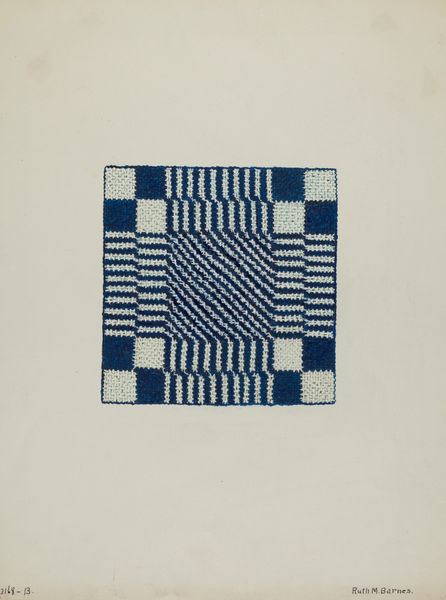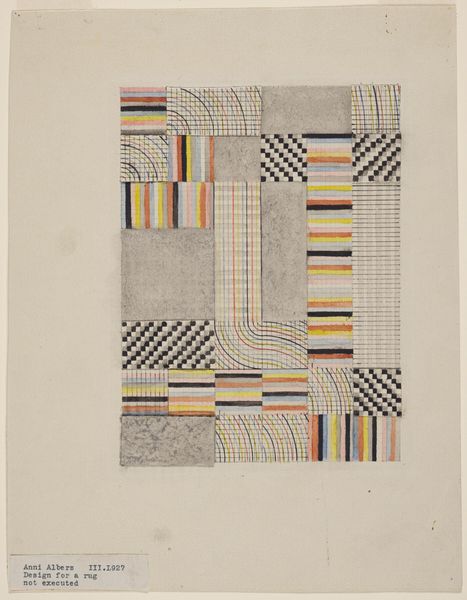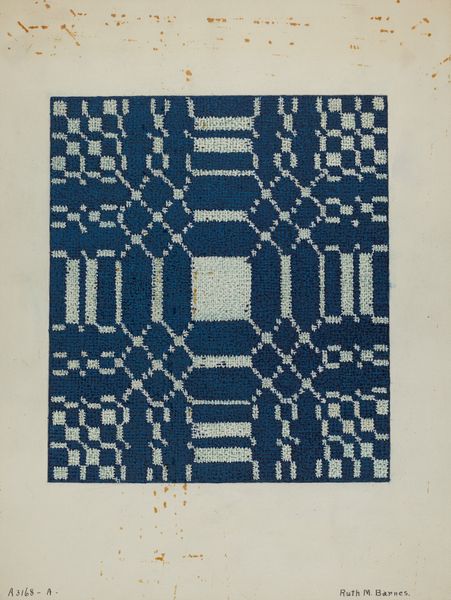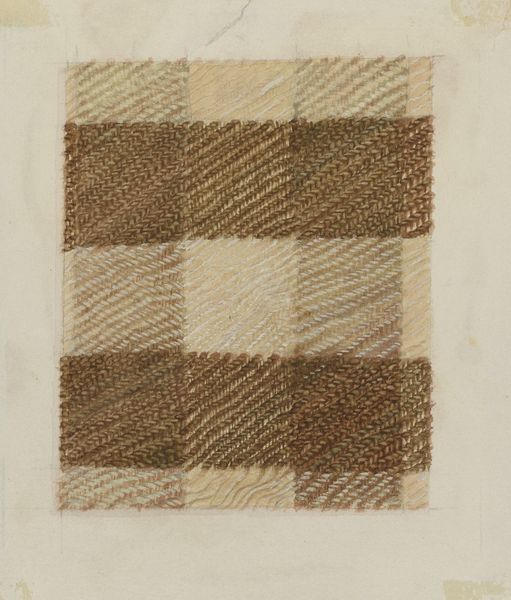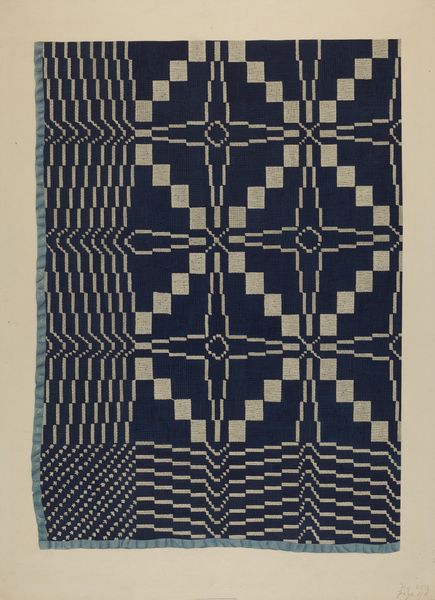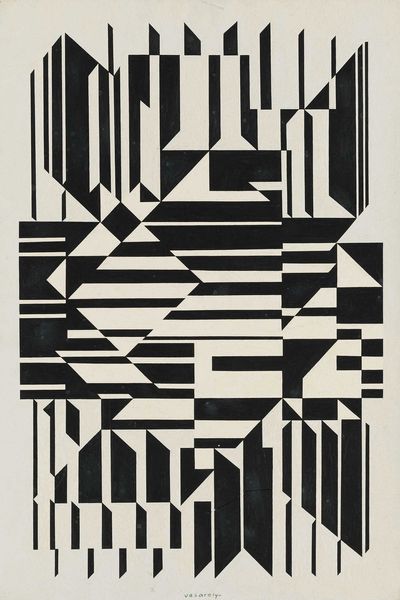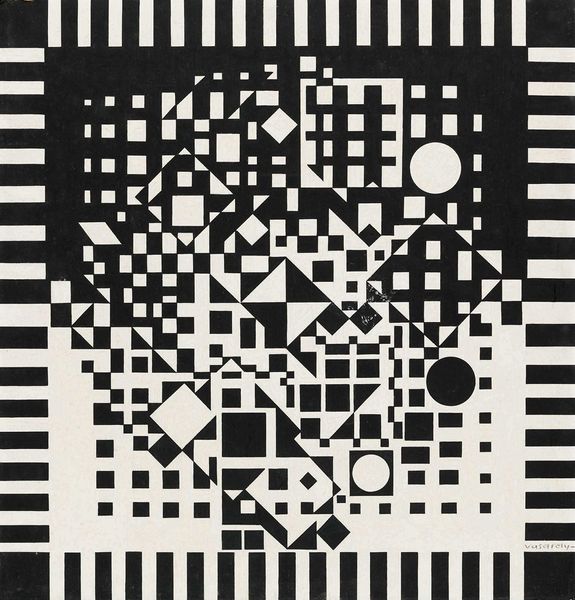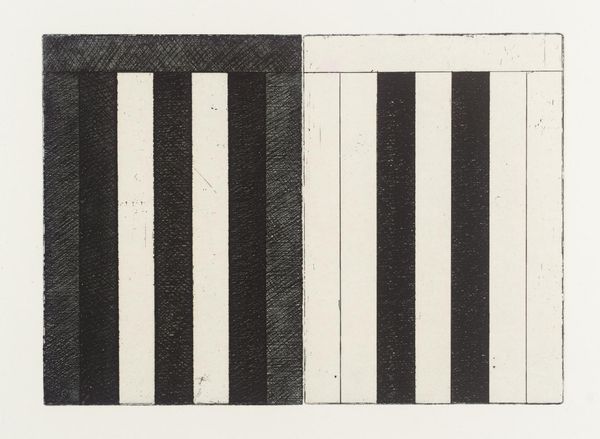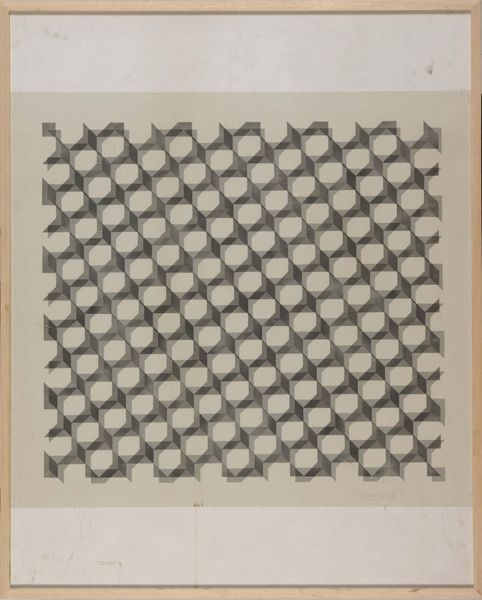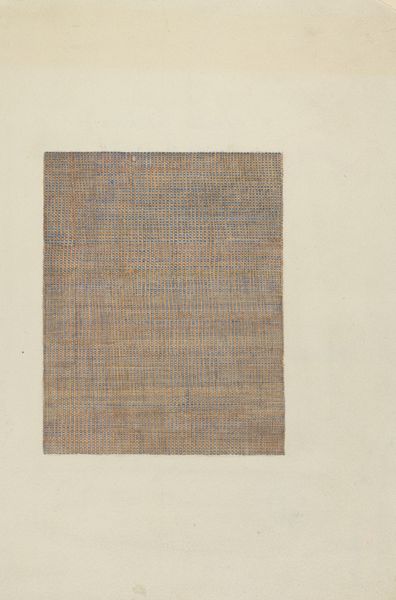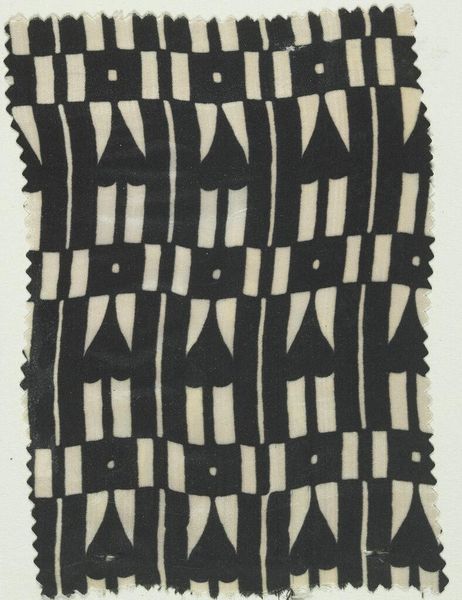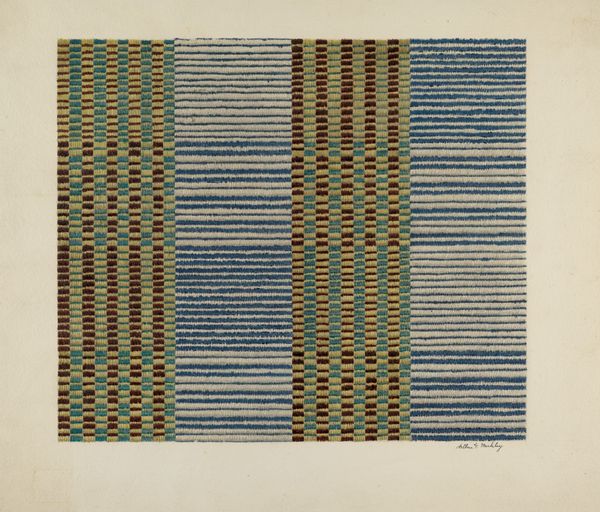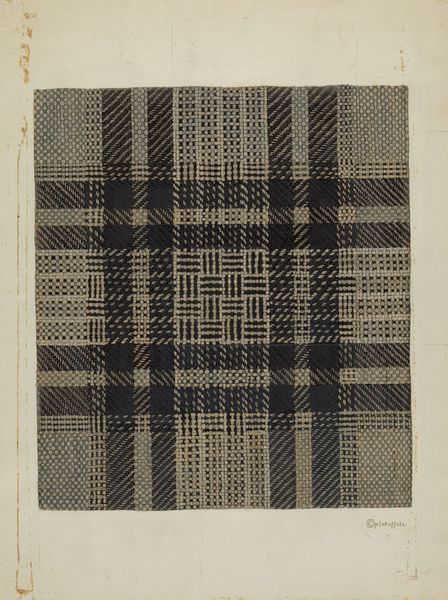
drawing, textile
#
drawing
#
textile
#
geometric
#
abstraction
Dimensions: overall: 30.5 x 24.3 cm (12 x 9 9/16 in.) Original IAD Object: 85" long; 69" wide
Copyright: National Gallery of Art: CC0 1.0
Curator: I’m immediately drawn to the subtle tensions in this Woven Coverlet, dating back to about 1937. The overall mood is restful, yet there is visual discord between geometric components. What is your first impression? Editor: At first glance, it seems quite orderly. But looking closer, the texture and pattern variation introduce a really interesting haptic quality. Knowing it's a textile piece transforms my perspective—I wonder about the specific types of thread used, the process. It makes me think about the means of its production. Curator: Absolutely. And placed in the 1930s, this artwork speaks to so many social layers beyond craft. Woven textiles were, historically, made within specific community and family systems, frequently by women. I wonder, what kind of politics are inscribed within its very warp and weft? What stories could it tell of that moment in time, and of women’s artistic practices? Editor: It is attributed to Theodore Pfitzer, according to our records, though! In some ways, this might be the real intrigue of this work, I would argue. If indeed this artist was a male identified person who worked with this medium, then what were the circumstances, and was the act potentially perceived as subversive by the community in which he lived? Did it provide him a venue for critique, perhaps? Curator: That question complicates it further. Perhaps we can use it as a chance to challenge binaries: "high" art versus craft; artmaking by men or women, geometric or decorative. Let’s sit with that discomfort. I agree, however, that it would add an important element if the artist had made choices to contest traditional means or narratives around textile. Editor: The drawing almost seems a way to pre-plan the weaving. Each small stroke seems calculated and methodical. I appreciate the raw, unrefined process revealed through these decisions. This reveals much, I think, about Pfitzer’s method and commitment to understanding craft. Curator: Indeed, and placing this work within our broader collection encourages an appreciation for abstraction rooted not in traditional fine arts media, but the textures and material processes of daily life. Editor: Ultimately, I see it as a wonderful commentary on production. How it blurs conventional boundaries in materials. Curator: And how, regardless of the medium, art gives expression to the multifaceted world that produces it, one thread at a time.
Comments
No comments
Be the first to comment and join the conversation on the ultimate creative platform.
